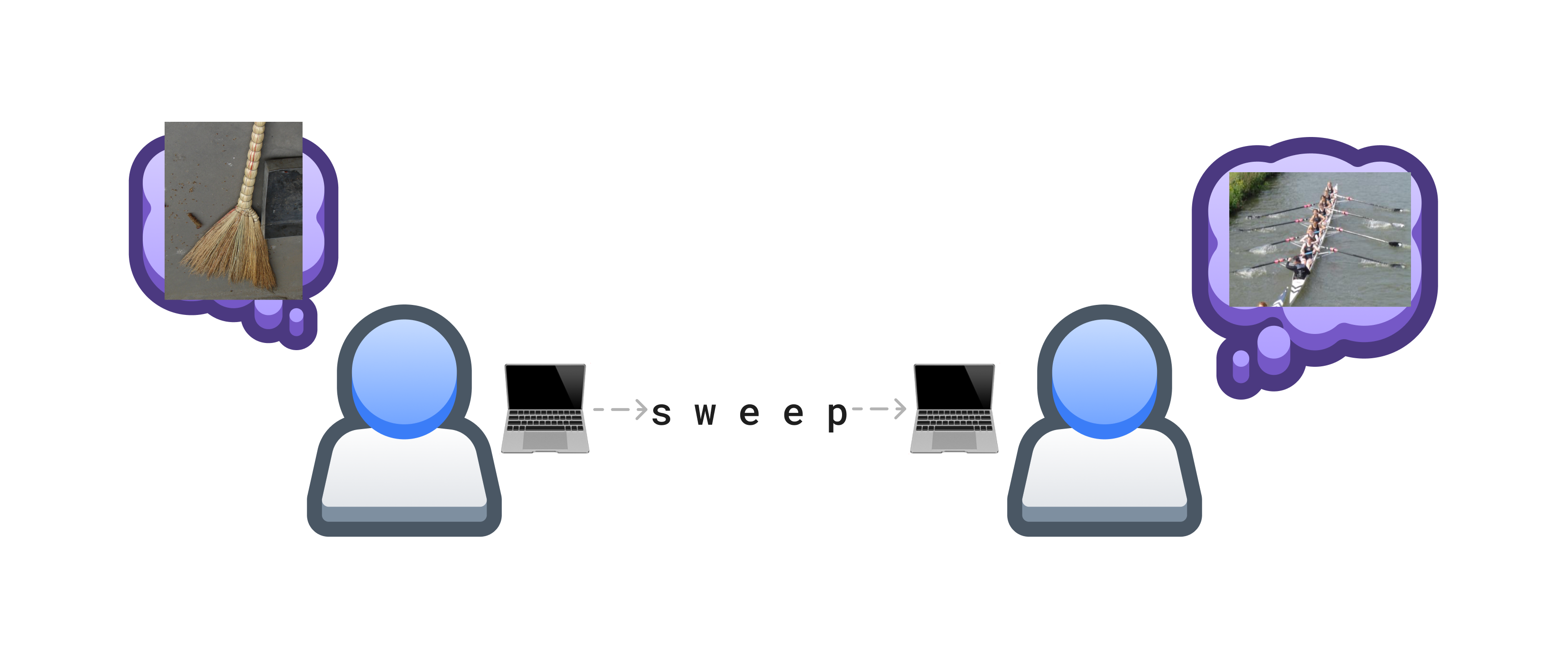The less aligned you are, the more communication bandwidth you need

Suppose you get an assignment in writing.
Make sure all the sweep equipment is ready next week.
It makes no sense. What do you do next?
- Do it anyway, to the best of your interpretation, then show them the results.
- Ask for clarification with a followup email.
- DM or text them.
- Call them.
- Meet with them face-to-face.
Early in my career, I probably would have gone with options 1-3.
Yes, I’ve actually done option 1. Probably I was too scared to ask because imposter syndrome kept telling me: well clearly everyone else can understand them and I can’t because I’m dumb.
I’ve also seen others make this mistake many times, causing lots of needless pain and arguments.
The longer I do this, the more I realize that the best option is the last: meet with them.
To quote User Stories Applied:
It seems so easy to think that if everything is written down and agreed to then there can be no disagreements, developers will know exactly what to build, testers will know exactly how to test it, and, most importantly, customers will get exactly what they wanted. Well, no, that’s wrong: Customers will get the developers’ interpretation of what was written down, which may not be exactly what they wanted.
Yes, I get it. Meeting face-to-face can be uncomfortable. However, it’s necessary because meeting face-to-face essentially establishes a new language.
Unlike programming languages, spoken languages are basically invented on the fly. If I throw out some technical jargon like CI/CD, static analysis, pipeline, fail fast, I might be making no sense to people in other fields. If you’re a chemical engineer, you might think pipeline refers to something that moves fluids around. But anyone who has worked with me in software probably knows exactly what I’m talking about (since I tend not to shut up about such things. Again, thanks for your patience).
When people work together in technical contexts for a long time, they tend to invent new language for common concepts. At Intel, we had a TLA (Three Letter Acronym) glossary to try and capture some of it. Which is ironic, because TLA isn’t technically an acronym, but an initialism. See what I mean with that language-is-made-up thing?
Back to the example above. If you’re surrounding by rowers, “sweep” means sweep rowing. If you work in a shop, “sweep” probably involves a broom. In a military context, “sweep” might mean check for hazards.
This is a simple example that I can explain in writing. But you can probably see how, if lots of such misaligned terms get thrown around, people can get into awkward disagreements or waste time doing tasks that no one asked for. The benefit of face-to-face communication is you can pause the speaker in real time and ask for clarification. You can also tell by their reaction if you’re not making sense. That feedback loop in-person lasts seconds, over instant message or email could be hours or days.
Having established a common language, then you put stuff in writing to recap the discussions (see ADR if you want another TLA). It’s a wonderful thing how little communication it takes once you’ve established a common language. It’s like when athletes can communicate an entire game plan with a simple nod of the head.
If you disagree with this post then let’s meet for coffee.